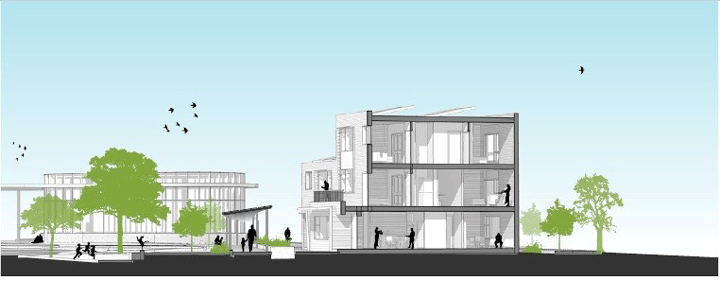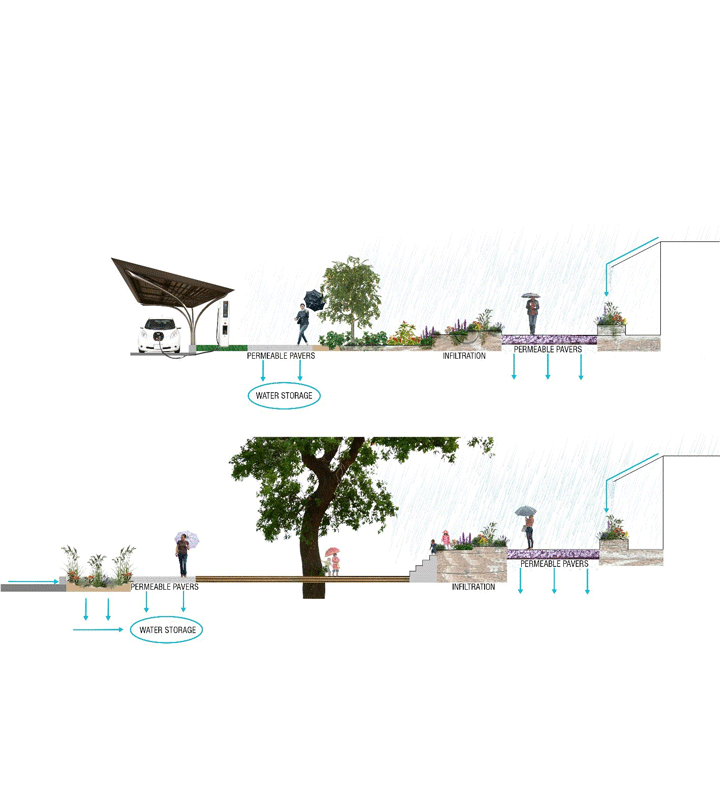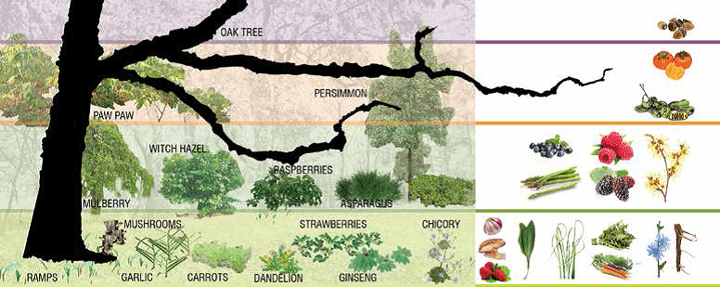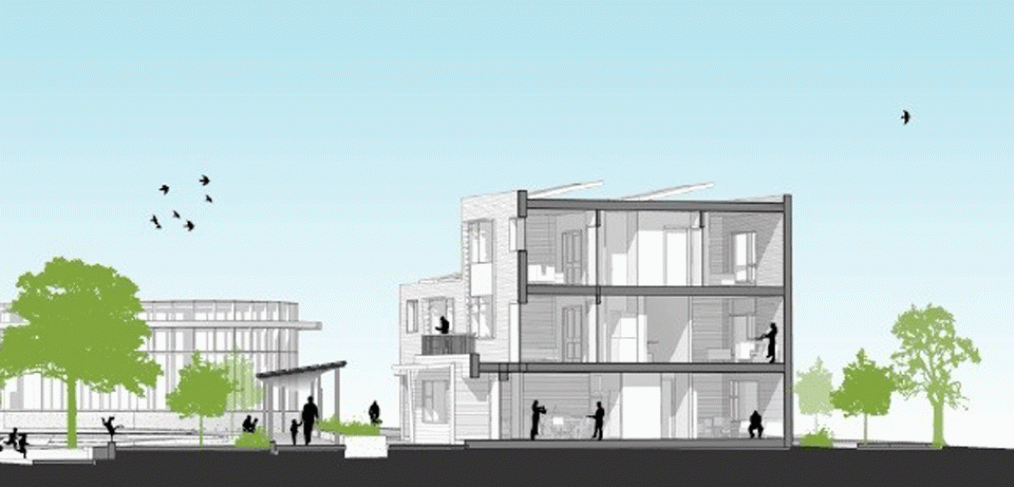
DC Affordable Living Competition: Beauty
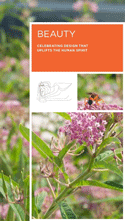 This is the sixth, and final, in our series of posts about the 2015 DC Affordable Living Design Competition. CallisonRTKL submitted a design for 10-15 single-family affordable townhomes in the Deanwood neighborhood of northeast Washington, DC that meets the mandates of the Living Building Challenge (LBC), widely recognized as the world’s most ambitious building performance standard. The LBC uses the metaphor of a flower deeply rooted in its place to give shape to its holistic design criteria. It is structured around seven performance categories, or “petals,” representing aspects of sustainable design: Place, Water, Energy, Health and Happiness, Materials, Equity and Beauty.
This is the sixth, and final, in our series of posts about the 2015 DC Affordable Living Design Competition. CallisonRTKL submitted a design for 10-15 single-family affordable townhomes in the Deanwood neighborhood of northeast Washington, DC that meets the mandates of the Living Building Challenge (LBC), widely recognized as the world’s most ambitious building performance standard. The LBC uses the metaphor of a flower deeply rooted in its place to give shape to its holistic design criteria. It is structured around seven performance categories, or “petals,” representing aspects of sustainable design: Place, Water, Energy, Health and Happiness, Materials, Equity and Beauty.
It’s over. The DC Affordable Living Competition has come to an end, and though our team ultimately did not take home first prize, this experience has undoubtedly made us better designers.
For our last post, we focus on beauty; fitting, since we began with a site visit to the Deanwood neighborhood, engaged in a robust research process and wrapped up with the aesthetic design for an affordable living community. Beauty is the last petal imperative for the Living Building Challenge and perhaps the one that requires the most reflection and careful plotting to achieve. For after all, what is beauty? Does it truly exist only in the eye of the beholder, or is there a universal sense of beauty to be attained? Don’t our ideas of beauty shift and fight and transform in different spaces and times?
In approximately 20-30 B.C., the famous ancient Roman architect Marcus Vitruvius wrote the first known text explaining the relationship between beauty and architecture. Vitruvius thought that a timeless notion of beauty could be learnt from the “truth of nature,” since nature’s designs are based on universal laws of proportion and symmetry. If a building is to create a sense of eurythmia—a graceful and agreeable atmosphere—it must mirror these natural laws.
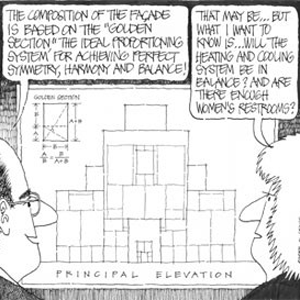 What might Vitruvius think about Frank Gehry? We may never know. Yet we as architects have an immense responsibility to create spaces that are not only functional, but pleasing to the eye.
What might Vitruvius think about Frank Gehry? We may never know. Yet we as architects have an immense responsibility to create spaces that are not only functional, but pleasing to the eye.
Validating Vitruvius’s correlation between beauty and nature, research shows that humans have an innate love and need for natural surroundings. We seek environments where nature is present and react negatively to environments that are sterile and cold. We also crave beauty in the form of order, proportion, texture, color and symmetry.
For decades, the green building movement has been associated with structures and buildings impressive in their energy and environmental performance but disastrous when it came to aesthetic appeal. A reversal in public perception—convincing the masses that green can be beautiful—hasn’t been easy.
One of the most revolutionary features of the Living Building Challenge imperatives was to establish a seemingly unquantifiable and subjective set of requirements for a quantifiable rating system. The LBC requires beauty at the same time that it does not presume to judge what beauty is. Instead, it aims to generate discussion and raise awareness about the role of good design, affirming the notion that aesthetics and performance cannot be put asunder.
We believe that when a design effectively maximizes social, economic and environmental value and is a result of a well-planned integrated design process, it is inherently beautiful. Before we put pencil to paper on a design for the affordable living community in Deanwood, we identified concepts important to the spirit of the project to guide us in our decision-making: Health. Home. Heritage. Variety. Unity. Respect.
These concepts manifest themselves in our design in ways that are, quite simply, beautiful: we included a forest garden that celebrates the history of the site, brings back natural variety and provides a place for inspiration and interaction that can help sustain a healthy community. The Living Machine greenhouse celebrates the environment and instills the desire to protect our earth in all who experience it. Shared external stairs create opportunities to enjoy natural light and fresh air while fostering micro-community relationship-building. And the list goes on. We could have treated these items as purely functional aspects of our design, but instead, we chose to celebrate them—endowing them with their own unique beauty and using them as tools to educate and inspire.
We’ve been talking about the LBC’s “petal” imperatives for months without much explanation beyond the metaphorical definition provided: “a building designed and constructed to function as elegantly and efficiently as a flower.” But incorporating the Beauty petal into our design taught us that, for aesthetics and efficiency to flow seamlessly together, beauty must be the result of a balanced interaction between all of the systems and elements present. A flower, “deeply rooted in its place,” is nature’s example.
Maybe Vitruvius was on to something.
View the team’s final submission board here.

